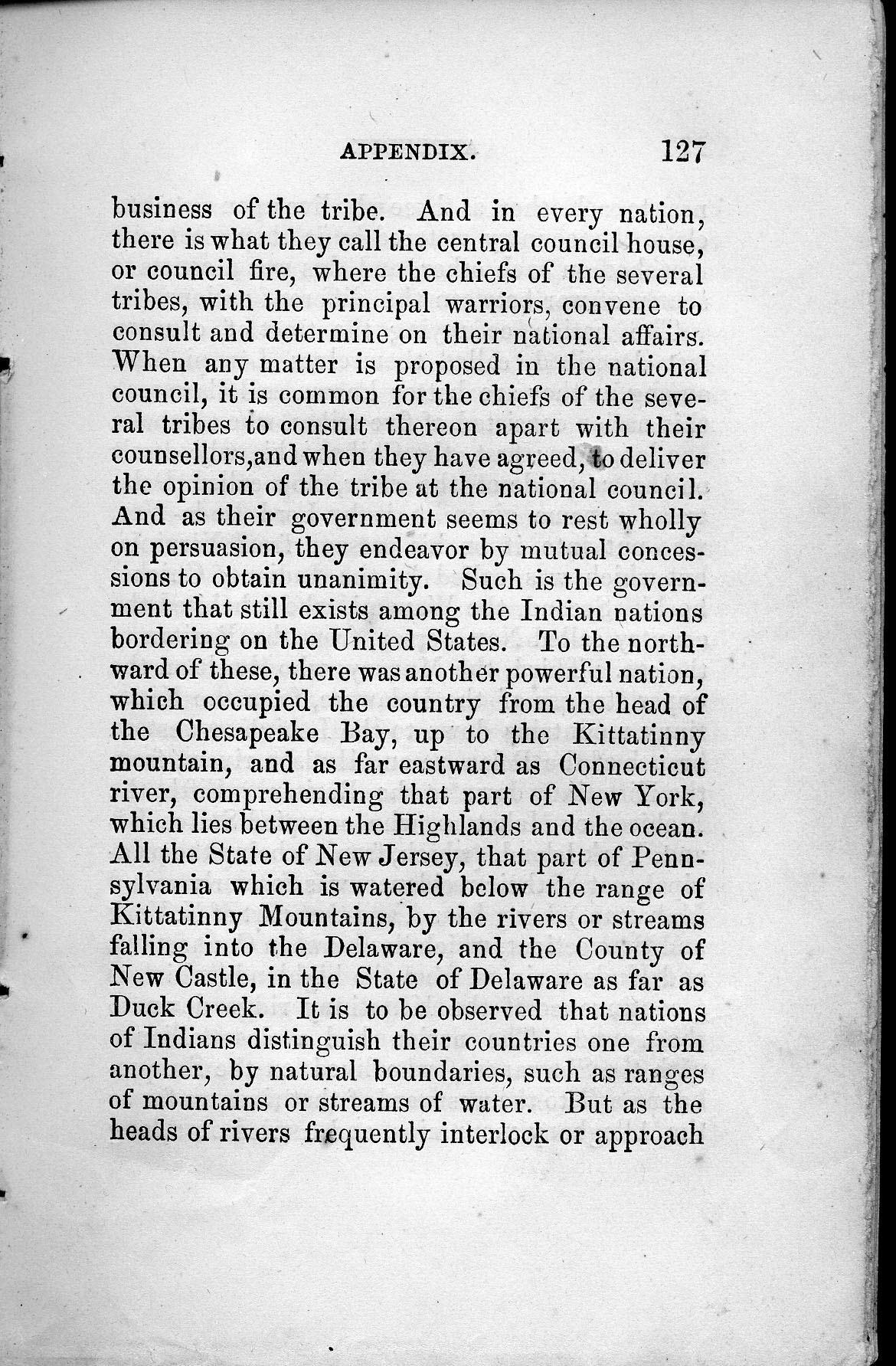business of
the tribe. And in every nation,
there is what they call the central
council house,
or council fire, where the chiefs of the
several
tribes, with the principal warriors, convene to
consult and determine on their national affairs.
When any matter is
proposed in the national
council, it is common for the chiefs of
the seve-
ral tribes to consult thereon apart with their
counsellors, and when they have agreed, to deliver
the opinion of
the tribe at the national council.
And as their government seems to
rest wholly
on persuasion, they endeavor by mutual
conces-
sions to obtain unanimity. Such is the govern-
ment that
still exists among the Indian nations
bordering on the United
States. To the north-
ward of these, there was another powerful
nation,
which occupied the country from the head of
the
Chesapeake Bay, up to the
Kittatinny
mountain, and as
far eastward as Connecticut
river, comprehending that part of New
York
which lies between the Highlands and the ocean.
All the State of New Jersey
sylvania
Kittatinny Mountains, by the rivers or streams
falling into the Delaware, and the County of
New Castle
Duck Creek. It is to be observed that nations
of Indians distinguish their countries one from
another, by natural boundaries, such as ranges
of mountains or streams of water. But as the
heads of rivers frequently interlock or approach

